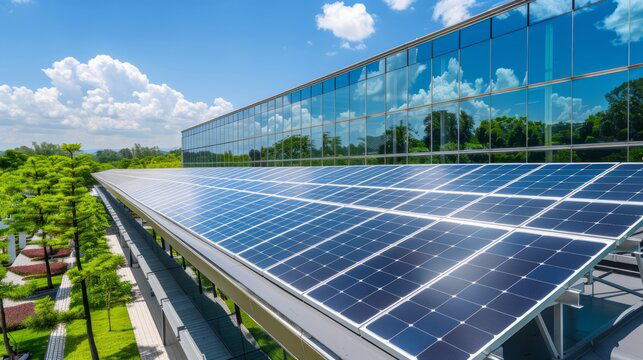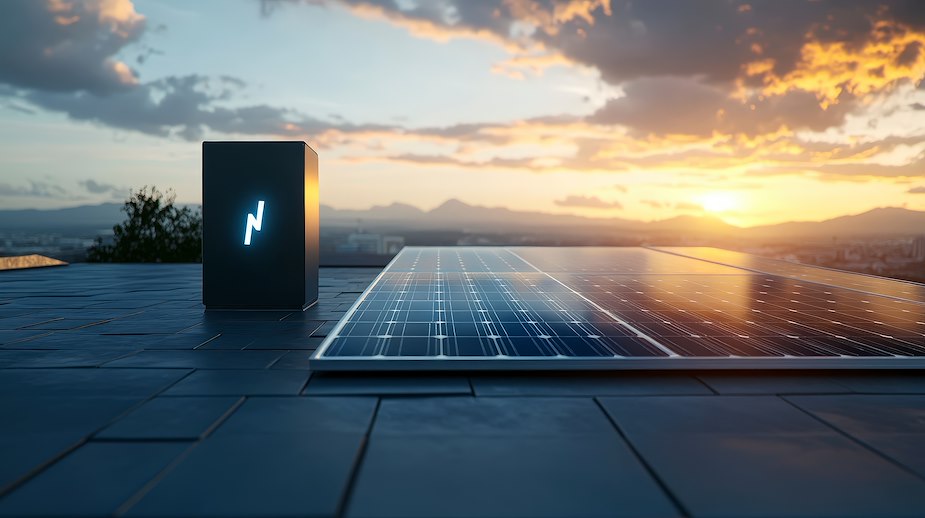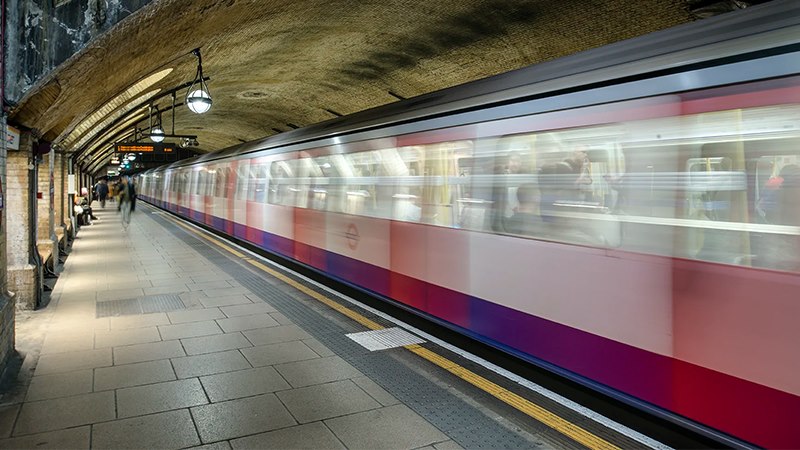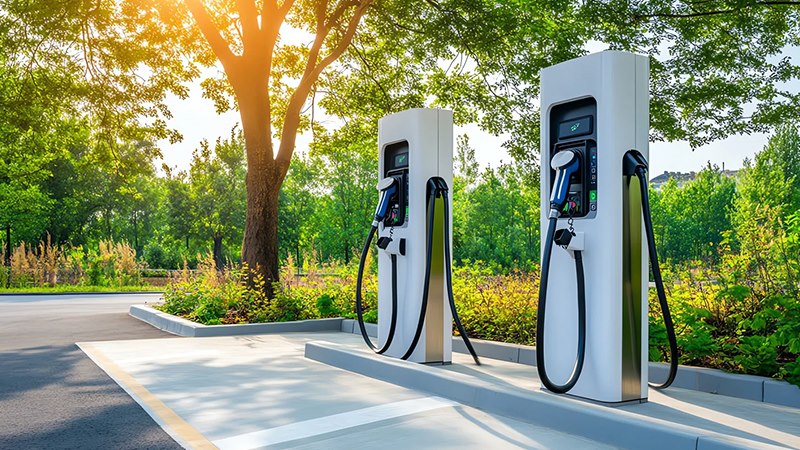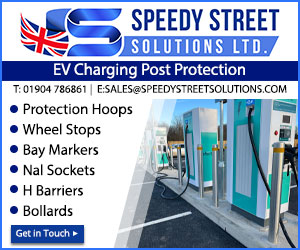Address
Unit 7, J4 Camberley
15 Doman Road
15 Doman Road
Camberley, Surrey
Guildford
GU15 3LB
Opening Hours
Today
09:00-17:30
View All Hours
Sunday
Closed
Monday
09:00-17:30
Tuesday
09:00-17:30
Wednesday
09:00-17:30
Thursday
09:00-17:30
Friday
Closed
Saturday
Closed
About Good Eco Group (Renewable Energy)
The Good Eco Group was founded 19 years ago with a mission to helping organisations of all sizes – from blue chip companies and SME’s to public sector bodies and educational institutions – to achieve significant energy efficiencies in their buildings. With over 9,500 installations nationwide, we’ve empowered our clients to lower their operational costs and CO2 emissions, working together towards a brighter, more sustainable future.
Our award-winning commercial building solutions provide design and installation of energy efficient, renewable technologies including LED Lighting & Smart Controls, Solar PV & Battery Storage, Heat Pumps and Workspace EV Charging. These transform your operational costs & carbon emissions, improve energy performance ratings and mitigate climate impacts.
Let us help you in powering your path to Net Zero. Our passionate energy experts will guide you in selecting the most effective solutions for your site. See where you can get the maximum return on investment, enabling you to make savings, whilst meeting ESG commitments.
Start your journey to energy efficiency with our solutions:
LED Lighting
Solutions for lighter, brighter, more efficient buildings
Solar PV
Power up - Generate and use renewable energy
Heat Pumps
Gas-free heating and cooling systems with
EV Charging
Making journeys more sustainable
Building and construction
Design and build services that complement energy efficiency projects.
£0 upfront cost: The Greener Good Fund provides upfront funding for your Net Zero projects, allowing you to benefit from cost and carbon savings. Ideal where Capex or grant-funding is not available, it’s financially smart, and responsibly good.
Immediate impact: Meet your Net Zero targets without having to wait for Capex, improve your EPC rating and deliver savings now. Backed by Big Finance – our funders invest in energy saving projects to support ESG commitments. Flexible solutions and terms, with tax advantages for businesses.
Backed by big finance, Who is The Greener Good Fund good for:
Education, Healthcare, Social Housing, Private Rental, Commercial, Industrial and Retail.
Gallery
Videos
News
Save money – and the planet
Unlike fluorescent lighting, LED’s are mercury-free, heat-free and are 100% recyclable—making them the most environmentally safe lighting option. Using less energy than any lighting technology on the market, LED’s will cut energy and maintenance costs drastically.
When overviewing a school’s expenses, energy is one that can be decreased without negatively impacting student learning. By replacing a T12 fluorescent tube with a LED T8, a facility can reduce its energy consumption by 35 percent. Then adding options such as reflectors, lenses, sensors and timers can increase potential savings even more. Learn about Light Boss our SMART IoT wireless system and how you can save even more money.
Many education facilities still operate using fluorescent, or even incandescent lighting and spend more money trying to compensate for the heat generated from outdated fixtures than the fixture itself. These expenses could be used towards other areas of the facility that need more attention. A lighting upgrade could reduce energy the facility uses for lighting by 70 to 85 percent.
As discussed in the last section, circadian rhythm not only has an impact on student productivity and physical health, but it also impacts mental health. Cooler color temperatures in the morning hours will help students wake up and focus on their schoolwork. Helping students become more alert will help their mental cognition and ability to learn and comprehend material.
Like color temperatures, light levels are also very important in the classroom. Bright lighting is used to treat various types of depression including Seasonal Affective Disorder (SAD), or the “winter blues”.This happens usually during the winter months when people aren’t exposed to enough sunlight during the day and is very common in school and office environments. Spending too much time in a dimly lit room can negatively affect mood and cause someone to feel depressed. That’s why bright lighting is so useful for depression treatments—it helps encourage bright and cheery moods. Dim lighting can also negatively impact what information is received and stored in the brain. If it is too dim to read, the wrong information might be read and sent to the brain.
Recent study
A recent study has shown that artificial lighting that stimulates daylighting can increase concentration and cognitive performance in students. The research in this study found that the lighting provided stimulation to the body that mimicked being outdoors. To help students become more alert earlier in the day, this caused their circadian rhythms to shift forward (in time). Some students were even able to tell a difference in their mood and concentration. Daylighting has also been shown to improve mood, mental performance, alertness and brain activity while decreasing depression, stress, sadness and violent behaviour.
The Importance of Light Quality
Many students who enter school already have visual problems—i.e. focusing, eye tracking, training, lazy eye, strabismus, etc. It’s important to not make it more difficult for those students to properly see all areas of the classroom as well as ease of navigating the rest of the school.
Glare and flicker can also negatively impact not only the students, but the teachers as well. Glare can cause students and teachers to squint, blink or look away. It’s caused one of two things: luminance is too high, or luminance ratios are too high. When one of these is occurring, visual performance will be decreased and discomfort will be increased.
There are two types of glare: discomfort and disability glare. Discomfort glare is the annoying sensation or pain caused by glare, while disability glare reduces visibility. Disability glare is caused by light being scattered in the eye, which then reduces luminance contrast of the retinal image.
Fluorescent lighting has also been shown to bother students with autism. People with autism tend to have sensitivity to the sub-visible flicker of direct fluorescent lighting. This can cause headaches, eyestrain and increased repetitive behavior. LEDs do not flicker when fully dimmed, making them a great option for special education classrooms.
Color temperatures also play a huge role in the health of students. Studies have shown that cool color temperatures (4100K – 5000K) can improve the behavior of students who are hyperactive or have learning disadvantages. The cool light color helps them focus and concentrate on tasks and projects. Hyperactivity is also related to a radiation stress condition, and the radiation emitted from fluorescent lighting fixtures can make it worse. When exposure to this radiation is reduced, behavior and performance can improve.
Another important biological function that depends on proper lighting is our circadian rhythm. It helps our bodies determine when to wake up, when to go to s
Unlike fluorescent lighting, LED’s are mercury-free, heat-free and are 100% recyclable—making them the most environmentally safe lighting option. Using less energy than any lighting technology on the market, LED’s will cut energy and maintenance costs drastically.
When overviewing a school’s expenses, energy is one that can be decreased without negatively impacting student learning. By replacing a T12 fluorescent tube with a LED T8, a facility can reduce its energy consumption by 35 percent. Then adding options such as reflectors, lenses, sensors and timers can increase potential savings even more. Learn about Light Boss our SMART IoT wireless system and how you can save even more money.
Many education facilities still operate using fluorescent, or even incandescent lighting and spend more money trying to compensate for the heat generated from outdated fixtures than the fixture itself. These expenses could be used towards other areas of the facility that need more attention. A lighting upgrade could reduce energy the facility uses for lighting by 70 to 85 percent.
As discussed in the last section, circadian rhythm not only has an impact on student productivity and physical health, but it also impacts mental health. Cooler color temperatures in the morning hours will help students wake up and focus on their schoolwork. Helping students become more alert will help their mental cognition and ability to learn and comprehend material.
Like color temperatures, light levels are also very important in the classroom. Bright lighting is used to treat various types of depression including Seasonal Affective Disorder (SAD), or the “winter blues”.This happens usually during the winter months when people aren’t exposed to enough sunlight during the day and is very common in school and office environments. Spending too much time in a dimly lit room can negatively affect mood and cause someone to feel depressed. That’s why bright lighting is so useful for depression treatments—it helps encourage bright and cheery moods. Dim lighting can also negatively impact what information is received and stored in the brain. If it is too dim to read, the wrong information might be read and sent to the brain.
Recent study
A recent study has shown that artificial lighting that stimulates daylighting can increase concentration and cognitive performance in students. The research in this study found that the lighting provided stimulation to the body that mimicked being outdoors. To help students become more alert earlier in the day, this caused their circadian rhythms to shift forward (in time). Some students were even able to tell a difference in their mood and concentration. Daylighting has also been shown to improve mood, mental performance, alertness and brain activity while decreasing depression, stress, sadness and violent behaviour.
The Importance of Light Quality
Many students who enter school already have visual problems—i.e. focusing, eye tracking, training, lazy eye, strabismus, etc. It’s important to not make it more difficult for those students to properly see all areas of the classroom as well as ease of navigating the rest of the school.
Glare and flicker can also negatively impact not only the students, but the teachers as well. Glare can cause students and teachers to squint, blink or look away. It’s caused one of two things: luminance is too high, or luminance ratios are too high. When one of these is occurring, visual performance will be decreased and discomfort will be increased.
There are two types of glare: discomfort and disability glare. Discomfort glare is the annoying sensation or pain caused by glare, while disability glare reduces visibility. Disability glare is caused by light being scattered in the eye, which then reduces luminance contrast of the retinal image.
Fluorescent lighting has also been shown to bother students with autism. People with autism tend to have sensitivity to the sub-visible flicker of direct fluorescent lighting. This can cause headaches, eyestrain and increased repetitive behavior. LEDs do not flicker when fully dimmed, making them a great option for special education classrooms.
Color temperatures also play a huge role in the health of students. Studies have shown that cool color temperatures (4100K – 5000K) can improve the behavior of students who are hyperactive or have learning disadvantages. The cool light color helps them focus and concentrate on tasks and projects. Hyperactivity is also related to a radiation stress condition, and the radiation emitted from fluorescent lighting fixtures can make it worse. When exposure to this radiation is reduced, behavior and performance can improve.
Another important biological function that depends on proper lighting is our circadian rhythm. It helps our bodies determine when to wake up, when to go to s
What are the benefits of installing LED Lighting?
Can be retrofit into existing fittings and schemes.
Save up to 85% in energy savings
Reducing your carbon footprint
Improvements in energy-efficiency
LED lighting will slash your maintenance costs by up to 95%.
Improved Productivity. LED lighting can speed up operations by provides targeted task lighting for in a range of environments eg. industries
Improved Safety at Work. The quality of LED light can help visibility, alertness, and productivity, thus helping prevent work-related accidents and safety complications. LED work station lighting can reduce machine/employee related accidents by making hazards more apparent.
Light Performance and light levels. LED lighting has a choice of colour temperatures, is dimmable and glare-free.
Installing replacement LED will remove the migraine-inducing flicker of traditional lights like fluorescent strip lighting seen in offices and workplaces
Instant On – Goodlight LED can be coupled with presence detection eg. sensors and timers.
Goodlight LED lamps are zero maintenance – internally regulated with no reliance on traditional control gear.
Free of harmful Toxins. Goodlight LED lamps are toxin free and easy to dispose of and recycle. Traditional CFL, fluorescent and metal halide lamps contain toxic gases like mercury which makes them difficult to dispose of safely.
A Guarantee of Quality. Goodlight offers a 5 Year Guarantee– rated for 50,000 hours*. We are so confident in the quality and performance of our products that they come with a 5 Year Guarantee against failure
LED Lighting can be used in conjunction with Light Boss, our SMART IoT wireless lighting control system which can track occupancy levels and optimise for daylight
Types of LED Lighting
There are two main categories of LED light sources for you to consider.
Retrofit Lighting
Are your current light fittings in good condition and relatively new? Retrofit LED lamps, which provide a simple ‘lamp swap’ to convert your existing light fitting to LED. Our retrofit LED lamps are of similar dimensions and style, so that they can be utilised in the original light fitting. This is often quick to install, far easier to replace a light bulb than an entire fitting. Examples of our popular retrofit LED lamps include : LIST here T5 LED Tube, T8 LED tube, LED SON lamps, PL & PLL LED lamps.
Click here for a selection of retrofittable LED Lighting from Goodlight.
LED Luminaires
If your existing fittings are old then it’s a good time to upgrade your fitting. This way you will get the most optimum performance. New LED fittings can be more cost-efficient as full LED fittings require no ongoing maintenance and provide high lumens packages. You may be able to reduce the number of light fittings you have but still get the same levels of brightness. New fittings are specifically designed for their purpose, and could be anti-glare, hazardous or explosion-proof, dim up or down, and turn on when mains power fails. They are compatible with controls and can feature integrated sensors.
Click here for our LED Heroes.
Can be retrofit into existing fittings and schemes.
Save up to 85% in energy savings
Reducing your carbon footprint
Improvements in energy-efficiency
LED lighting will slash your maintenance costs by up to 95%.
Improved Productivity. LED lighting can speed up operations by provides targeted task lighting for in a range of environments eg. industries
Improved Safety at Work. The quality of LED light can help visibility, alertness, and productivity, thus helping prevent work-related accidents and safety complications. LED work station lighting can reduce machine/employee related accidents by making hazards more apparent.
Light Performance and light levels. LED lighting has a choice of colour temperatures, is dimmable and glare-free.
Installing replacement LED will remove the migraine-inducing flicker of traditional lights like fluorescent strip lighting seen in offices and workplaces
Instant On – Goodlight LED can be coupled with presence detection eg. sensors and timers.
Goodlight LED lamps are zero maintenance – internally regulated with no reliance on traditional control gear.
Free of harmful Toxins. Goodlight LED lamps are toxin free and easy to dispose of and recycle. Traditional CFL, fluorescent and metal halide lamps contain toxic gases like mercury which makes them difficult to dispose of safely.
A Guarantee of Quality. Goodlight offers a 5 Year Guarantee– rated for 50,000 hours*. We are so confident in the quality and performance of our products that they come with a 5 Year Guarantee against failure
LED Lighting can be used in conjunction with Light Boss, our SMART IoT wireless lighting control system which can track occupancy levels and optimise for daylight
Types of LED Lighting
There are two main categories of LED light sources for you to consider.
Retrofit Lighting
Are your current light fittings in good condition and relatively new? Retrofit LED lamps, which provide a simple ‘lamp swap’ to convert your existing light fitting to LED. Our retrofit LED lamps are of similar dimensions and style, so that they can be utilised in the original light fitting. This is often quick to install, far easier to replace a light bulb than an entire fitting. Examples of our popular retrofit LED lamps include : LIST here T5 LED Tube, T8 LED tube, LED SON lamps, PL & PLL LED lamps.
Click here for a selection of retrofittable LED Lighting from Goodlight.
LED Luminaires
If your existing fittings are old then it’s a good time to upgrade your fitting. This way you will get the most optimum performance. New LED fittings can be more cost-efficient as full LED fittings require no ongoing maintenance and provide high lumens packages. You may be able to reduce the number of light fittings you have but still get the same levels of brightness. New fittings are specifically designed for their purpose, and could be anti-glare, hazardous or explosion-proof, dim up or down, and turn on when mains power fails. They are compatible with controls and can feature integrated sensors.
Click here for our LED Heroes.
Installing energy-efficient and cost-effective LED lighting can make a significant difference to a healthcare budget.
Hospitals are one of the few environments that need to be well-lit 24 hours a day and adequate lighting is essential across all areas. This includes wards, operating theatres, emergency departments, dispensaries, emergency rooms and nurse stations as well as reception areas, consulting rooms, corridors and canteens. A brighter light output, longer lifespans and product reliability is essential, especially in clinical areas like operating theatres and emergency rooms. LED lighting can offer the ability to provide precise, angled lighting with no shadowing, e.g., adjustable LED downlights and wall washers with beam angle options.
In clinical environments where safety and hygiene are of paramount importance, Goodlight LED lighting is low heat, glass-free and maintenance-free with no hazardous emissions.
Hospitals can sometimes be daunting places for patients and visitors alike, and by replacing existing fluorescent lighting with LED retrofit equivalents ensures that lighting is patient-friendly, visually pleasing, glare-free and shadow-free. With a dramatic improvement in quality of light, LED lighting has been proven to improve productivity levels.
Environments including hospices, care homes and communal areas within a hospital could require an even, softer and more natural light. LED lighting is available in both Daylight and Natural colour temperatures, allowing you to choose the desired colour output, with dimmable options available.
Goodlight has a wide range of LED lighting solutions ideal for a range of healthcare environments including recessed ceiling panels, downlights, tubes, battens and luminaires which are energy-efficient and easy to install, whilst providing impressive energy and maintenance savings of up to 80%. All Goodlight LED lighting is rated for 50,000 hours, with a five-year guarantee.
For added savings on energy, install Light Boss SMART IoT lighting control that can monitor, control and automate all lighting – the ultimate energy- efficient lighting control system. SMART tech has revolutionised the way we manage our buildings with devices, sensors and gateways linked to cloud-based services to provide a connected, ‘internet of things’ (IoT) network. Light Boss is wireless and retrofittable to existing buildings. Light Boss saves you energy, costs and maintenance, whilst meeting safety compliance obligations and keeping users safe.
Hospitals are one of the few environments that need to be well-lit 24 hours a day and adequate lighting is essential across all areas. This includes wards, operating theatres, emergency departments, dispensaries, emergency rooms and nurse stations as well as reception areas, consulting rooms, corridors and canteens. A brighter light output, longer lifespans and product reliability is essential, especially in clinical areas like operating theatres and emergency rooms. LED lighting can offer the ability to provide precise, angled lighting with no shadowing, e.g., adjustable LED downlights and wall washers with beam angle options.
In clinical environments where safety and hygiene are of paramount importance, Goodlight LED lighting is low heat, glass-free and maintenance-free with no hazardous emissions.
Hospitals can sometimes be daunting places for patients and visitors alike, and by replacing existing fluorescent lighting with LED retrofit equivalents ensures that lighting is patient-friendly, visually pleasing, glare-free and shadow-free. With a dramatic improvement in quality of light, LED lighting has been proven to improve productivity levels.
Environments including hospices, care homes and communal areas within a hospital could require an even, softer and more natural light. LED lighting is available in both Daylight and Natural colour temperatures, allowing you to choose the desired colour output, with dimmable options available.
Goodlight has a wide range of LED lighting solutions ideal for a range of healthcare environments including recessed ceiling panels, downlights, tubes, battens and luminaires which are energy-efficient and easy to install, whilst providing impressive energy and maintenance savings of up to 80%. All Goodlight LED lighting is rated for 50,000 hours, with a five-year guarantee.
For added savings on energy, install Light Boss SMART IoT lighting control that can monitor, control and automate all lighting – the ultimate energy- efficient lighting control system. SMART tech has revolutionised the way we manage our buildings with devices, sensors and gateways linked to cloud-based services to provide a connected, ‘internet of things’ (IoT) network. Light Boss is wireless and retrofittable to existing buildings. Light Boss saves you energy, costs and maintenance, whilst meeting safety compliance obligations and keeping users safe.
There are still a number of myths around commercial solar PV, despite its increasing popularity. Let's address some of the most common misunderstandings and correct them.
Myth 1: In cloudy weather, commercial solar is ineffective
Fact: Because solar panels use daylight rather than direct sunlight, they may generate electricity even on cloudy days. Panels nowadays are made to work well in various weather conditions, even though it’s not as efficient.
Myth 2: The cost of commercial solar PV is too high
Fact: Over the last ten years, solar technology has become much more affordable. The initial investment is now more inexpensive than ever thanks to tax savings and government incentives. Additionally, the long-term savings often outweigh the initial costs.
Myth 3: Solar maintenance is difficult
Fact: Commercial solar PV systems need very little upkeep. To keep them functioning at their best, routine cleaning and occasional inspections are sufficient.
Myth 4: Solar panels are said to damage roofs
Fact: Properly installed solar panels can help keep your roof safe by protecting it from the weather. Installations are done carefully to avoid damage to the roof and solar panels. Solar panels can shield your roof from severe weather.
Myth 5: A lot of space is needed for commercial solar PV systems
Most solar PV systems are designed to be installed on rooftops, taking up unnecessary space. Ground-mounted equipment that can be placed on available land is one of the flexible options. Rooftops and open spaces are suitable locations for solar PV systems. Often, they are adaptable and scalable energy solutions designed to satisfy a range of business requirements.
Myth 6: Solar panels aren’t long-lasting
Fact: In reality, solar panels are built to only survive for 25 to 30 years or more with very little degradation. Manufacturers frequently support this with guarantees to ensure their reliability.
Myth 7: Solar energy can’t power large facilities
Fact: No matter how big or small the size of a business is, solar systems can be expanded to suit a company’s energy needs. Even businesses that require a lot of energy can be efficiently powered by large solar farms and storage systems.
Myth 8: Commercial solar panels can’t be recycled
Yes, solar panels can be recycled. The ability to recover and reuse materials such as glass, silicon, and metals can be recovered and reused, which helps to minimise their negative impact on the environment.
Myth 9: Commercial solar PV doesn’t work in cold climates
Fact: Solar panels perform well in cold climates. Snow can even improve performance by reflecting sunlight, and panels operate more efficiently in cooler temperatures. By debunking these myths, businesses can make informed decisions and confidently embrace the benefits of solar PV.
Myth 10: Property value is reduced by commercial solar panels
Fact: Many types of commercial solar panels now mix in perfectly with rooftops, making them sleeker and more aesthetically pleasing. In reality, research indicates that by improving the energy efficiency and sustainability of houses and businesses, solar installations can raise the value of real estate, making them higher in value.
Myth 1: In cloudy weather, commercial solar is ineffective
Fact: Because solar panels use daylight rather than direct sunlight, they may generate electricity even on cloudy days. Panels nowadays are made to work well in various weather conditions, even though it’s not as efficient.
Myth 2: The cost of commercial solar PV is too high
Fact: Over the last ten years, solar technology has become much more affordable. The initial investment is now more inexpensive than ever thanks to tax savings and government incentives. Additionally, the long-term savings often outweigh the initial costs.
Myth 3: Solar maintenance is difficult
Fact: Commercial solar PV systems need very little upkeep. To keep them functioning at their best, routine cleaning and occasional inspections are sufficient.
Myth 4: Solar panels are said to damage roofs
Fact: Properly installed solar panels can help keep your roof safe by protecting it from the weather. Installations are done carefully to avoid damage to the roof and solar panels. Solar panels can shield your roof from severe weather.
Myth 5: A lot of space is needed for commercial solar PV systems
Most solar PV systems are designed to be installed on rooftops, taking up unnecessary space. Ground-mounted equipment that can be placed on available land is one of the flexible options. Rooftops and open spaces are suitable locations for solar PV systems. Often, they are adaptable and scalable energy solutions designed to satisfy a range of business requirements.
Myth 6: Solar panels aren’t long-lasting
Fact: In reality, solar panels are built to only survive for 25 to 30 years or more with very little degradation. Manufacturers frequently support this with guarantees to ensure their reliability.
Myth 7: Solar energy can’t power large facilities
Fact: No matter how big or small the size of a business is, solar systems can be expanded to suit a company’s energy needs. Even businesses that require a lot of energy can be efficiently powered by large solar farms and storage systems.
Myth 8: Commercial solar panels can’t be recycled
Yes, solar panels can be recycled. The ability to recover and reuse materials such as glass, silicon, and metals can be recovered and reused, which helps to minimise their negative impact on the environment.
Myth 9: Commercial solar PV doesn’t work in cold climates
Fact: Solar panels perform well in cold climates. Snow can even improve performance by reflecting sunlight, and panels operate more efficiently in cooler temperatures. By debunking these myths, businesses can make informed decisions and confidently embrace the benefits of solar PV.
Myth 10: Property value is reduced by commercial solar panels
Fact: Many types of commercial solar panels now mix in perfectly with rooftops, making them sleeker and more aesthetically pleasing. In reality, research indicates that by improving the energy efficiency and sustainability of houses and businesses, solar installations can raise the value of real estate, making them higher in value.
The movement of electric vehicles (EVs) is shifting into high gear. With new incentives, changing rules, and more people driving EVs than ever, adding chargers at the workplace isn’t just a nice-to-have anymore—it’s a smart, future-ready move for any business.
In this blog, we look at the top reasons why businesses should prioritise EV charging infrastructure in 2025.
Government Incentives and Financial Support
One of the most compelling reasons to invest in EV charging infrastructure now is the availability of government incentives. In the UK, businesses have a great opportunity to tap into support schemes such as:
Workplace Charging Scheme (WCS): This grant offers up to 75% off the price of purchasing and fitting EV chargers, capped at £350 per socket and a total of 40 sockets per business.
Regional and Local Grants: Other regions and councils provide additional grants to enable companies to electrify their processes.
Tax Benefits: Installing EV chargers can offer tax relief through capital allowances, enabling businesses to offset their investment against taxable profits.
With incentives expected to phase out as EV adoption becomes mainstream, 2025 presents an opportune moment for businesses to take advantage of these financial benefits.
The Regulatory Push for Sustainability
In the UK, governments are stepping up their efforts to drive a low-carbon future. With new policies coming into play, companies that don’t adapt not only risk falling behind, but they could also face fines or fail to meet compliance standards.
One example of this shift is: EV Charging Requirements.
In the UK, recent updates to building regulations now require EV charging points to be installed in all new non-residential buildings, as well as those undergoing major renovations. It’s a clear signal that electric transport is no longer optional; it’s becoming the norm.
Net Zero Goals: With corporate ESG (Environmental, Social, and Governance) standards requiring sustainable infrastructure, businesses are facing mounting pressure to lower their carbon footprints.
Ultra-Low Emission Zones (ULEZ) and Clean Air Zones (CAZ): As more cities introduce low-emission zones, EVs become increasingly appealing to businesses with fleets, who find electric vehicles are a cleaner option.
As ESG (Environmental, Social, and Governance) standards keep growing in importance, adding EV charging stations is becoming essential for businesses that want to meet their sustainability goals. By taking the lead and installing chargers now, companies can stay ahead of the game and enhance their green credentials.
EV Charging’s Business Advantages Go Beyond Compliance
There are significant business benefits to investing in electric vehicle (EV) charging infrastructure in addition to regulatory compliance and government incentives.
Attract and Retain Talent: For today’s workforce, sustainability is more important than ever. Beyond pay and job titles, workers are choosing to work at companies that share their values. Providing on-site EV charging is an obvious and evident way to demonstrate your dedication to a more environmentally friendly future. It’s also a useful perk that can help you stand out in the competitive job market and increase employee satisfaction.
A Little Extra Income Never Hurts: If you’ve got a customer-facing location, you could actually make some money back from the chargers. Charging a small fee for visitors or customers to use them helps cover the costs and maybe even turns into a new little revenue stream.
Taking the Lead
Electric vehicles are no longer a future concept; they’re rapidly becoming standard. Businesses can stay ahead of the market and avoid the stress of a last-minute transition by making an investment in EV charging infrastructure today. Having the infrastructure in place now guarantees a more effective and efficient tomorrow, whether you are supporting your business’s vehicles, employee cars, or customers.
Keep Up with What People Want: People are paying more attention to how green the businesses are. Customers like to see companies doing their bit, and EV charging can set you apart from others who haven’t made that move yet. Over time, it might contribute to an increase in customer loyalty.
By investing in EV charging infrastructure now, businesses can get ahead of the curve, avoiding the stress and cost of rushing to catch up later. Whether you’re supporting your fleet, providing for employee vehicles, or making life easier for visiting clients, having the right setup in place today means you’re ready for the future. It’s a smart move that shows you’re thinking long-term, not just ticking boxes.
Whether you’re thinking about your team, your company vehicles, or your customers, workplace EV chargers offer a bunch of practical and financial benefits. It
In this blog, we look at the top reasons why businesses should prioritise EV charging infrastructure in 2025.
Government Incentives and Financial Support
One of the most compelling reasons to invest in EV charging infrastructure now is the availability of government incentives. In the UK, businesses have a great opportunity to tap into support schemes such as:
Workplace Charging Scheme (WCS): This grant offers up to 75% off the price of purchasing and fitting EV chargers, capped at £350 per socket and a total of 40 sockets per business.
Regional and Local Grants: Other regions and councils provide additional grants to enable companies to electrify their processes.
Tax Benefits: Installing EV chargers can offer tax relief through capital allowances, enabling businesses to offset their investment against taxable profits.
With incentives expected to phase out as EV adoption becomes mainstream, 2025 presents an opportune moment for businesses to take advantage of these financial benefits.
The Regulatory Push for Sustainability
In the UK, governments are stepping up their efforts to drive a low-carbon future. With new policies coming into play, companies that don’t adapt not only risk falling behind, but they could also face fines or fail to meet compliance standards.
One example of this shift is: EV Charging Requirements.
In the UK, recent updates to building regulations now require EV charging points to be installed in all new non-residential buildings, as well as those undergoing major renovations. It’s a clear signal that electric transport is no longer optional; it’s becoming the norm.
Net Zero Goals: With corporate ESG (Environmental, Social, and Governance) standards requiring sustainable infrastructure, businesses are facing mounting pressure to lower their carbon footprints.
Ultra-Low Emission Zones (ULEZ) and Clean Air Zones (CAZ): As more cities introduce low-emission zones, EVs become increasingly appealing to businesses with fleets, who find electric vehicles are a cleaner option.
As ESG (Environmental, Social, and Governance) standards keep growing in importance, adding EV charging stations is becoming essential for businesses that want to meet their sustainability goals. By taking the lead and installing chargers now, companies can stay ahead of the game and enhance their green credentials.
EV Charging’s Business Advantages Go Beyond Compliance
There are significant business benefits to investing in electric vehicle (EV) charging infrastructure in addition to regulatory compliance and government incentives.
Attract and Retain Talent: For today’s workforce, sustainability is more important than ever. Beyond pay and job titles, workers are choosing to work at companies that share their values. Providing on-site EV charging is an obvious and evident way to demonstrate your dedication to a more environmentally friendly future. It’s also a useful perk that can help you stand out in the competitive job market and increase employee satisfaction.
A Little Extra Income Never Hurts: If you’ve got a customer-facing location, you could actually make some money back from the chargers. Charging a small fee for visitors or customers to use them helps cover the costs and maybe even turns into a new little revenue stream.
Taking the Lead
Electric vehicles are no longer a future concept; they’re rapidly becoming standard. Businesses can stay ahead of the market and avoid the stress of a last-minute transition by making an investment in EV charging infrastructure today. Having the infrastructure in place now guarantees a more effective and efficient tomorrow, whether you are supporting your business’s vehicles, employee cars, or customers.
Keep Up with What People Want: People are paying more attention to how green the businesses are. Customers like to see companies doing their bit, and EV charging can set you apart from others who haven’t made that move yet. Over time, it might contribute to an increase in customer loyalty.
By investing in EV charging infrastructure now, businesses can get ahead of the curve, avoiding the stress and cost of rushing to catch up later. Whether you’re supporting your fleet, providing for employee vehicles, or making life easier for visiting clients, having the right setup in place today means you’re ready for the future. It’s a smart move that shows you’re thinking long-term, not just ticking boxes.
Whether you’re thinking about your team, your company vehicles, or your customers, workplace EV chargers offer a bunch of practical and financial benefits. It
Are You Really Getting Your Money’s Worth with Heat Pumps?
Heating your workspace isn’t just about warmth and comfort, though that’s important. But let’s not forget the other stuff, like how much it costs to run, how it affects the environment, and whether it’ll still make sense a few years down the line. That’s where the debate between heat pumps and traditional systems like gas boilers really heats up (pun intended).
Not sure, heat pumps can look pricey at first glance. But here’s the thing: thanks to the UK government’s Boiler Upgrade Scheme, you could get up to £7,500 toward the switch. That kind of support makes the jump to a low-carbon system a lot more doable — and maybe not nearly as expensive as you’d think.
Gas boilers, by comparison, cost around £2,500 on average. Yes, they are less expensive up front, but they are rarely eligible for significant financial assistance, so you pay what you see.
In summary, installing heat pumps is more expensive, but it can be much more feasible with government assistance.
Operating Expenses: What Will You Have to Pay Over Time?
Superstars of energy are heat pumps. Compared to gas or oil heating, they can be three to four times more efficient. Your energy bills will significantly decrease as a result, particularly as electricity becomes more environmentally friendly over time.
Traditional heating might seem cheaper to run at first, but with gas and oil prices climbing and systems running less efficiently, the long-term costs add up fast.
Over time, say, 10 years or so, a heat pump might pay for itself just through the savings on your energy bills. It’s one of those upgrades that feels expensive up front but can really start to make sense the longer you use it.
The Green Factor: Who is better for the planet?
This is where heat pumps shine. Instead of burning fuel, they pull heat from the air, ground, or even nearby water, which means zero emissions right at the source. And if the electricity powering your heat pump comes from renewables? You’ve got yourself a seriously eco-friendly setup.
Gas and oil systems burn fossil fuels directly, releasing a lot of CO2 in the process. Switching to a greener system later can be expensive and not always very effective.
If cutting your carbon footprint is a priority, heat pumps are a no-brainer.
Lifespan & Maintenance: Which Is Easier to Maintain?
Heat pumps require little maintenance, just periodic checks to keep everything functioning properly, and last for 15 to 20 years.
Gas boilers tend to last 10–15 years, and they need more hands-on care (think regular servicing, cleaning, and part replacements).
Extra Benefits: Year-round Comfort, Cooling, and Independence!
Heat pumps have the ability to cool as well as heat. All year long, that system is working double duty.
Energy independence: Add solar panels to the mix, and you’re well on your way to stepping off the fossil fuel rollercoaster.
Final Thoughts: Is a Heat Pump Worth It?
If you’re looking for something cheap and quick, a traditional boiler might still tempt you. But if you’re playing the long game, thinking about lower bills, cleaner energy, and fewer surprises down the road, a heat pump is a smart, future-ready choice.
Are you curious about the potential applications of heat pumps in your business? Our experts are here to help. Contact us for a free consultation or a bespoke feasibility study to learn how we can help you reduce emissions, save money, and position your business for a greener future.
Heating your workspace isn’t just about warmth and comfort, though that’s important. But let’s not forget the other stuff, like how much it costs to run, how it affects the environment, and whether it’ll still make sense a few years down the line. That’s where the debate between heat pumps and traditional systems like gas boilers really heats up (pun intended).
Not sure, heat pumps can look pricey at first glance. But here’s the thing: thanks to the UK government’s Boiler Upgrade Scheme, you could get up to £7,500 toward the switch. That kind of support makes the jump to a low-carbon system a lot more doable — and maybe not nearly as expensive as you’d think.
Gas boilers, by comparison, cost around £2,500 on average. Yes, they are less expensive up front, but they are rarely eligible for significant financial assistance, so you pay what you see.
In summary, installing heat pumps is more expensive, but it can be much more feasible with government assistance.
Operating Expenses: What Will You Have to Pay Over Time?
Superstars of energy are heat pumps. Compared to gas or oil heating, they can be three to four times more efficient. Your energy bills will significantly decrease as a result, particularly as electricity becomes more environmentally friendly over time.
Traditional heating might seem cheaper to run at first, but with gas and oil prices climbing and systems running less efficiently, the long-term costs add up fast.
Over time, say, 10 years or so, a heat pump might pay for itself just through the savings on your energy bills. It’s one of those upgrades that feels expensive up front but can really start to make sense the longer you use it.
The Green Factor: Who is better for the planet?
This is where heat pumps shine. Instead of burning fuel, they pull heat from the air, ground, or even nearby water, which means zero emissions right at the source. And if the electricity powering your heat pump comes from renewables? You’ve got yourself a seriously eco-friendly setup.
Gas and oil systems burn fossil fuels directly, releasing a lot of CO2 in the process. Switching to a greener system later can be expensive and not always very effective.
If cutting your carbon footprint is a priority, heat pumps are a no-brainer.
Lifespan & Maintenance: Which Is Easier to Maintain?
Heat pumps require little maintenance, just periodic checks to keep everything functioning properly, and last for 15 to 20 years.
Gas boilers tend to last 10–15 years, and they need more hands-on care (think regular servicing, cleaning, and part replacements).
Extra Benefits: Year-round Comfort, Cooling, and Independence!
Heat pumps have the ability to cool as well as heat. All year long, that system is working double duty.
Energy independence: Add solar panels to the mix, and you’re well on your way to stepping off the fossil fuel rollercoaster.
Final Thoughts: Is a Heat Pump Worth It?
If you’re looking for something cheap and quick, a traditional boiler might still tempt you. But if you’re playing the long game, thinking about lower bills, cleaner energy, and fewer surprises down the road, a heat pump is a smart, future-ready choice.
Are you curious about the potential applications of heat pumps in your business? Our experts are here to help. Contact us for a free consultation or a bespoke feasibility study to learn how we can help you reduce emissions, save money, and position your business for a greener future.
As EVs become more and more popular, many myths about EV charging continue to exist. Many businesses and individuals are reluctant to invest in EV charging infrastructure because of misconceptions or out-of-date information. In this blog, we dispel some of the most widespread misconceptions regarding EV charging.
In this article, we debunk some of the most common myths surrounding EV charging.
Myth 1: EV Charging is Expensive
Although establishing EV charging infrastructure does involve a one-time cost, it is now more affordable than ever thanks to a number of government grants and financing alternatives. In the UK, businesses can benefit from grants such as:
• Workplace Charging Scheme (WCS): Covers up to 75% of installation costs, capped at £350 per socket for up to 40 sockets.
• Tax Benefits: Companies can deduct installation costs by claiming capital allowances.
• Local Grants: Many councils provide extra funding to companies that make EV charging investments.
Charging infrastructure is a financially viable long-term investment because of the growing demand for EVs and the potential for revenue generation through pay-per-use models.
Myth 2: EV Chargers Take Too Long to Charge Cars
The charging speed depends on the type of charger being used:
• Slow chargers (3–7 kW): Ideal for overnight or extended parking at the office.
• Fast chargers (7-22 kW): These chargers are perfect for corporate environments because they can fully charge an EV in a few hours.
• 50–350 kW Rapid & Ultra-Rapid Chargers: These chargers, which can give an 80% charge in 30 minutes or less, are perfect for business and fleet use.
In most business environments, there are more than enough fast chargers to accommodate employees and visitors.
Myth 3: EV Charging Will Overload the Grid
A lot of people worry that EV chargers will put strain on the grid. But chargers these days are smarter than ever. Modern EV chargers balance energy demand, reducing the strain on the grid and keeping the system balanced even during busy periods.
Smart chargers aren’t the only option you have:
• Solar Power: To assist in powering your chargers, you can use clean, renewable energy.
• Battery storage: You can store excess energy for use during periods of high demand. This helps take pressure off the grid and helps you save on energy costs.
Off-Peak Charging: Scheduling charging sessions during non-peak hours to reduce costs and load on the grid.
Myth 4: EV Chargers Require High Maintenance
EV chargers are long-lasting and require little maintenance. Smooth operation is made possible by regular inspections and software updates. Many manufacturers offer warranties and remote monitoring services, which eases the load on businesses.
Myth 5: There Aren’t Enough EVs on the Road to Justify Chargers
You may believe that installing chargers isn’t worth it because there aren’t enough electric vehicles on the road yet. In actuality, however, the number of EVs is rapidly increasing and isn’t going to slow down. More people are switching to electric vehicles every day as a result of governments setting deadlines to phase out petrol and diesel vehicles.
Adding chargers now will help you advance rather than just stay up to date. You’ll draw in clients and staff who are concerned about sustainability. Additionally, you’ll demonstrate that your company is prepared for the future.
EVs are not going away. You’ll be prepared when everyone else is still catching up if you install chargers now.
Want to find out more about EV charging? Check this link out: https://www.goodecogroup.com/ev-charging/
Want to find out more about EV charging? Check this link.
In this article, we debunk some of the most common myths surrounding EV charging.
Myth 1: EV Charging is Expensive
Although establishing EV charging infrastructure does involve a one-time cost, it is now more affordable than ever thanks to a number of government grants and financing alternatives. In the UK, businesses can benefit from grants such as:
• Workplace Charging Scheme (WCS): Covers up to 75% of installation costs, capped at £350 per socket for up to 40 sockets.
• Tax Benefits: Companies can deduct installation costs by claiming capital allowances.
• Local Grants: Many councils provide extra funding to companies that make EV charging investments.
Charging infrastructure is a financially viable long-term investment because of the growing demand for EVs and the potential for revenue generation through pay-per-use models.
Myth 2: EV Chargers Take Too Long to Charge Cars
The charging speed depends on the type of charger being used:
• Slow chargers (3–7 kW): Ideal for overnight or extended parking at the office.
• Fast chargers (7-22 kW): These chargers are perfect for corporate environments because they can fully charge an EV in a few hours.
• 50–350 kW Rapid & Ultra-Rapid Chargers: These chargers, which can give an 80% charge in 30 minutes or less, are perfect for business and fleet use.
In most business environments, there are more than enough fast chargers to accommodate employees and visitors.
Myth 3: EV Charging Will Overload the Grid
A lot of people worry that EV chargers will put strain on the grid. But chargers these days are smarter than ever. Modern EV chargers balance energy demand, reducing the strain on the grid and keeping the system balanced even during busy periods.
Smart chargers aren’t the only option you have:
• Solar Power: To assist in powering your chargers, you can use clean, renewable energy.
• Battery storage: You can store excess energy for use during periods of high demand. This helps take pressure off the grid and helps you save on energy costs.
Off-Peak Charging: Scheduling charging sessions during non-peak hours to reduce costs and load on the grid.
Myth 4: EV Chargers Require High Maintenance
EV chargers are long-lasting and require little maintenance. Smooth operation is made possible by regular inspections and software updates. Many manufacturers offer warranties and remote monitoring services, which eases the load on businesses.
Myth 5: There Aren’t Enough EVs on the Road to Justify Chargers
You may believe that installing chargers isn’t worth it because there aren’t enough electric vehicles on the road yet. In actuality, however, the number of EVs is rapidly increasing and isn’t going to slow down. More people are switching to electric vehicles every day as a result of governments setting deadlines to phase out petrol and diesel vehicles.
Adding chargers now will help you advance rather than just stay up to date. You’ll draw in clients and staff who are concerned about sustainability. Additionally, you’ll demonstrate that your company is prepared for the future.
EVs are not going away. You’ll be prepared when everyone else is still catching up if you install chargers now.
Want to find out more about EV charging? Check this link out: https://www.goodecogroup.com/ev-charging/
Want to find out more about EV charging? Check this link.
Heat pumps are becoming more and more popular as an environmentally friendly heating and cooling option. However, prospective users are frequently put off by false beliefs about their usability, cost, and performance.
Let’s address and debunk 10 common myths about heat pumps:
Myth 1: Heat pumps don’t work in cold climates
Reality: Modern heat pumps are equipped with advanced technology to function efficiently even in sub-zero temperatures. For example, inverter-driven compressors enable air-source heat pumps to function in temperatures as low as -25°C.
Myth 2: Installing heat pumps is expensive to install
Reality: Heat pumps do require a higher initial investment (£7,000-£12,000), but there are government incentives like grants and tax credits that can help with these costs. Heat pumps are energy-efficient and often result in long-term savings.
Myth 3: Heat pumps are noisy
Reality: The newest models are made to be incredibly quiet, with noise levels that are frequently about 40 dB lower than those of a refrigerator or a quiet library.
Myth 4: Heat pumps are only suitable for new homes
Reality: Not true! You can easily fit heat pumps into existing homes. Hybrid heat pump systems even work alongside your old boiler, making them perfect for renovations.
Myth 5: Heat pumps are not able to heat water effectively
Reality: The truth is that a lot of heat pumps have built-in systems designed specifically to heat water. Even if you use a lot of hot water, the latest models can easily handle it.
Myth 6: Only mild climates can use heat pumps
Reality: Modern air-source and ground-source heat pumps can handle cold winters and work reliably in many different climates, including chilly ones.
Myth 7: Installing a heat pump takes ages
Reality: Professionals usually install heat pumps within a couple of days.
Myth 8: Heat pumps are not environmentally friendly
Reality: The environmental benefits of heat pumps are excellent. They take advantage of heat from the ground, water, and air. Carbon emissions will decrease as a result. They are much more environmentally friendly if you use renewable electricity.
Myth 9: Heat pumps need lots of maintenance
Reality: Heat pumps don’t need much care. You just need a quick check every now and then to make sure they’re working well. They often last longer than traditional heating systems, around 15 to 20 years.
Myth 10: Heat pumps can’t heat your property enough
Reality: A heat pump that’s the right size will keep your property warm all year. Professionals can help make sure your system is the perfect fit.
Overall, heat pumps are a great choice for sustainable living. They help get your home ready for the future and protect the planet.
Want to know more information?
Let’s address and debunk 10 common myths about heat pumps:
Myth 1: Heat pumps don’t work in cold climates
Reality: Modern heat pumps are equipped with advanced technology to function efficiently even in sub-zero temperatures. For example, inverter-driven compressors enable air-source heat pumps to function in temperatures as low as -25°C.
Myth 2: Installing heat pumps is expensive to install
Reality: Heat pumps do require a higher initial investment (£7,000-£12,000), but there are government incentives like grants and tax credits that can help with these costs. Heat pumps are energy-efficient and often result in long-term savings.
Myth 3: Heat pumps are noisy
Reality: The newest models are made to be incredibly quiet, with noise levels that are frequently about 40 dB lower than those of a refrigerator or a quiet library.
Myth 4: Heat pumps are only suitable for new homes
Reality: Not true! You can easily fit heat pumps into existing homes. Hybrid heat pump systems even work alongside your old boiler, making them perfect for renovations.
Myth 5: Heat pumps are not able to heat water effectively
Reality: The truth is that a lot of heat pumps have built-in systems designed specifically to heat water. Even if you use a lot of hot water, the latest models can easily handle it.
Myth 6: Only mild climates can use heat pumps
Reality: Modern air-source and ground-source heat pumps can handle cold winters and work reliably in many different climates, including chilly ones.
Myth 7: Installing a heat pump takes ages
Reality: Professionals usually install heat pumps within a couple of days.
Myth 8: Heat pumps are not environmentally friendly
Reality: The environmental benefits of heat pumps are excellent. They take advantage of heat from the ground, water, and air. Carbon emissions will decrease as a result. They are much more environmentally friendly if you use renewable electricity.
Myth 9: Heat pumps need lots of maintenance
Reality: Heat pumps don’t need much care. You just need a quick check every now and then to make sure they’re working well. They often last longer than traditional heating systems, around 15 to 20 years.
Myth 10: Heat pumps can’t heat your property enough
Reality: A heat pump that’s the right size will keep your property warm all year. Professionals can help make sure your system is the perfect fit.
Overall, heat pumps are a great choice for sustainable living. They help get your home ready for the future and protect the planet.
Want to know more information?
As businesses aim to cut emissions and shrink energy bills, commercial solar-powered EV charging is stepping into the spotlight. By integrating solar energy with EV charging stations, users can reduce costs, enhance sustainability, and minimise reliance on the grid.
How Commercial Solar-Powered EV Charging Work?
Solar EV charging stations combine solar panels to generate and store renewable energy for electric vehicles. The process involves:
1. Sunlight becomes electricity: Solar panels convert sunlight that transforms into electricity using photovoltaic cells.
2. Energy Storage: Excess solar energy can be stored in battery storage systems for later use when sunlight is not out.
3. Powering up EVs: They store or directly generate solar energy to power EV charging stations, which helps cut down reliance on the electricity grid.
4. Smart Energy Management: helps companies cut costs by ensuring power is used efficiently, and also distributes energy and balances demand and supply.
Why Commercial Solar-Powered EV Charging is the Future
Increased Savings Over Time
Using sunlight to power EV charging stations allows businesses to lower electricity bills and reduce EV charging expenses and helps reduce reliance on the grid. Other financial benefits are:
1. Less dependence on the grid: You will buy less electricity from utility companies, which helps costs go down.
2. The government offers incentives like tax breaks, rebates, and grants for installing solar-powered charging stations.
3. Long-term ROI on investment: Solar panels can last for 25+ years, providing continuous energy savings.
Sustainability and Reduced Carbon Footprint
Switching to solar-powered charging is one of the easiest ways to cut back on greenhouse gas emissions as compared to grid electricity, which depends on fossil fuels. Here is what that means for your business:
1. It’s 100% renewable energy: unlike conventional power, solar energy is clean and sustainable.
2. Less reliance on fossil fuels: Every solar-powered charge helps speed up the shift to cleaner, greener transportation.
3. Stronger Sustainability Credibility: Achieving your ESG goals isn’t just good for the planet. It helps businesses meet sustainability goals and attract environmentally conscious customers.
Energy Independence and Resilience
Commercial solar-powered EV charging gives your business greater control over energy supply. There are a few advantages:
1. Protection from price hikes: When utility rates increase, you won’t be paying more. Solar helps keep energy costs steady.
2. Off-grid capability: With battery storage, charging stations can function without relying on the power grid, ensuring a reliable energy supply even during outages.
3. Scalability: Systems can be expanded with additional solar panels and batteries to meet growing energy needs.
Getting Ready for the EV growth
Electric vehicles are the future. Charging stations will need to keep up, as the number of solar-powered EV charging puts your business ahead of the curve by:
1. Keeping up with demand: More EVs mean more charging needs. You’ll be ready to handle it.
2. Following new rules: Cleaner energy is being promoted by governments, and solar charging enables you to meet those growing regulations.
3. Making your property more attractive: People care about sustainability; solar charging can boost your property’s value, and it adds real value to your property.
Commercial solar-powered EVs are not just smart; they are the way of the future, offering significant cost savings, environmental benefits, and energy independence. As businesses and individuals seek innovative solutions to reduce carbon emissions and energy expenses, integrating solar power with EV charging infrastructure is a forward-thinking investment. Businesses can improve their operations and contribute to a cleaner, greener world by adopting this technology.
How Commercial Solar-Powered EV Charging Work?
Solar EV charging stations combine solar panels to generate and store renewable energy for electric vehicles. The process involves:
1. Sunlight becomes electricity: Solar panels convert sunlight that transforms into electricity using photovoltaic cells.
2. Energy Storage: Excess solar energy can be stored in battery storage systems for later use when sunlight is not out.
3. Powering up EVs: They store or directly generate solar energy to power EV charging stations, which helps cut down reliance on the electricity grid.
4. Smart Energy Management: helps companies cut costs by ensuring power is used efficiently, and also distributes energy and balances demand and supply.
Why Commercial Solar-Powered EV Charging is the Future
Increased Savings Over Time
Using sunlight to power EV charging stations allows businesses to lower electricity bills and reduce EV charging expenses and helps reduce reliance on the grid. Other financial benefits are:
1. Less dependence on the grid: You will buy less electricity from utility companies, which helps costs go down.
2. The government offers incentives like tax breaks, rebates, and grants for installing solar-powered charging stations.
3. Long-term ROI on investment: Solar panels can last for 25+ years, providing continuous energy savings.
Sustainability and Reduced Carbon Footprint
Switching to solar-powered charging is one of the easiest ways to cut back on greenhouse gas emissions as compared to grid electricity, which depends on fossil fuels. Here is what that means for your business:
1. It’s 100% renewable energy: unlike conventional power, solar energy is clean and sustainable.
2. Less reliance on fossil fuels: Every solar-powered charge helps speed up the shift to cleaner, greener transportation.
3. Stronger Sustainability Credibility: Achieving your ESG goals isn’t just good for the planet. It helps businesses meet sustainability goals and attract environmentally conscious customers.
Energy Independence and Resilience
Commercial solar-powered EV charging gives your business greater control over energy supply. There are a few advantages:
1. Protection from price hikes: When utility rates increase, you won’t be paying more. Solar helps keep energy costs steady.
2. Off-grid capability: With battery storage, charging stations can function without relying on the power grid, ensuring a reliable energy supply even during outages.
3. Scalability: Systems can be expanded with additional solar panels and batteries to meet growing energy needs.
Getting Ready for the EV growth
Electric vehicles are the future. Charging stations will need to keep up, as the number of solar-powered EV charging puts your business ahead of the curve by:
1. Keeping up with demand: More EVs mean more charging needs. You’ll be ready to handle it.
2. Following new rules: Cleaner energy is being promoted by governments, and solar charging enables you to meet those growing regulations.
3. Making your property more attractive: People care about sustainability; solar charging can boost your property’s value, and it adds real value to your property.
Commercial solar-powered EVs are not just smart; they are the way of the future, offering significant cost savings, environmental benefits, and energy independence. As businesses and individuals seek innovative solutions to reduce carbon emissions and energy expenses, integrating solar power with EV charging infrastructure is a forward-thinking investment. Businesses can improve their operations and contribute to a cleaner, greener world by adopting this technology.
Making the switch to a heat pump is a smart and important step to improve your company's energy efficiency and environmental consciousness. However, with so many different types and technical specifications available, selecting the best system can be challenging.
Don’t worry. To help you choose the best choice for your company’s needs, we’ve broken it down into simple, doable steps.
1. Start by identifying the unique needs of your company
Heating and Cooling Requirements: Your heating and cooling solution should be tailored to the unique needs of your company.
Demands for Heating and Cooling: First, you need to do an energy audit. Good Eco Group can assist in determining your usage based on the size, insulation, layout, and climate of your building.
Operating Hours: A heat pump can provide continuous energy savings that add up over time if your company operates long hours or around the clock.
2. Identifying the various types of Heat Pumps
Not all heat pumps are created equally. Here is an overview of the choices:
Air-Source Heat Pumps (ASHP): These are ideal for moderate temperatures because they extract heat from the atmosphere. They are usually very simple to install and the least expensive.
Ground-source heat pumps (GSHP): These devices, also known as geothermal systems, extract heat from the earth’s interior. They are more expensive initially and take up more space, but they are also very efficient.
Water-Source Heat Pumps: If your property is close to a consistent water source, like lakes, rivers, or even usable wells, these systems provide dependable, efficient operation.
Hybrid Systems: Combine a heat pump with a traditional boiler for enhanced performance in extreme temperatures.
3. Take Note of the Efficiency Ratings
This might be technical, but it is important, particularly in terms of long-term cost savings. Consider your heating system’s “miles per gallon” throughout a season as the seasonal coefficient of performance (SCOP).
System Compatibility: Once a pump is selected, it can be readily integrated with the HVAC system if your building has it already. It will save money on retrofitting it and time.
4. Examine your requirements and space required prior to installing
Outdoor Space: Air-source units need a convenient, well-ventilated outdoor space for maintenance.
Land Requirements: Ground-source heat pump systems need a significant amount of space. Depending on your site, this could mean drilling deep vertical boreholes or digging wide horizontal trenches to install the underground piping network.
5. Examine the Long-Term Savings versus the Initial Costs
Commercial heat pumps typically range in price from £7,000 to £20,000, depending on their size and type. Here’s the good news:
• Lower Energy Bills: Effective systems lower your operating costs year after year.
• Combine with Solar: You can further reduce your costs and adopt a more environmentally friendly strategy by combining your heat pump with solar panels, which is another great way to reduce energy bills.
• Available Rewards: Take advantage of initiatives like the UK’s Boiler Upgrade Scheme, which offers up to £7,500 for heat pump installation.
6. Selecting the Appropriate Capacity – The Most isn’t Always Better
Systems that are too big can waste energy. Undersized ones could leave you cold. Collaborate with an expert to align the system with your highest heating and cooling requirements.
7. Think long-term and prepare for the future
Smart Controls: Look for models that can be controlled remotely or that are integrated into your building’s smart systems.
Scalability: Pick a system that can grow with you to accommodate your evolving requirements.
8. Work with Certified Installers
Choosing the right installer is as important as choosing the right heat pump. Go with a certified professional who can help you evaluate your site, recommend your best options, and make sure everything is up-to-date, like your warranty.
9. Understanding the performance after the installation is done
Installing your heat pump is just the initial bit; to get the most out of it, you need to keep it running at its best.
• Arranging the maintenance inspections: To increase the system’s lifespan, a routine check is necessary.
• Choosing the right heat pump is a great move for your business, one that can cut costs and shrink your carbon footprint at the same time. Getting the newest or most fancy model available isn’t the only goal. Finding the one that truly fits your space, complements your objectives, and gets you where you want to go is the key.
• Monitoring how much energy you consume: Keep an eye on your energy costs and make any adjustments to the settings whenever needed.
• Seasonal Changes: Making changes to your system to make it funct
Don’t worry. To help you choose the best choice for your company’s needs, we’ve broken it down into simple, doable steps.
1. Start by identifying the unique needs of your company
Heating and Cooling Requirements: Your heating and cooling solution should be tailored to the unique needs of your company.
Demands for Heating and Cooling: First, you need to do an energy audit. Good Eco Group can assist in determining your usage based on the size, insulation, layout, and climate of your building.
Operating Hours: A heat pump can provide continuous energy savings that add up over time if your company operates long hours or around the clock.
2. Identifying the various types of Heat Pumps
Not all heat pumps are created equally. Here is an overview of the choices:
Air-Source Heat Pumps (ASHP): These are ideal for moderate temperatures because they extract heat from the atmosphere. They are usually very simple to install and the least expensive.
Ground-source heat pumps (GSHP): These devices, also known as geothermal systems, extract heat from the earth’s interior. They are more expensive initially and take up more space, but they are also very efficient.
Water-Source Heat Pumps: If your property is close to a consistent water source, like lakes, rivers, or even usable wells, these systems provide dependable, efficient operation.
Hybrid Systems: Combine a heat pump with a traditional boiler for enhanced performance in extreme temperatures.
3. Take Note of the Efficiency Ratings
This might be technical, but it is important, particularly in terms of long-term cost savings. Consider your heating system’s “miles per gallon” throughout a season as the seasonal coefficient of performance (SCOP).
System Compatibility: Once a pump is selected, it can be readily integrated with the HVAC system if your building has it already. It will save money on retrofitting it and time.
4. Examine your requirements and space required prior to installing
Outdoor Space: Air-source units need a convenient, well-ventilated outdoor space for maintenance.
Land Requirements: Ground-source heat pump systems need a significant amount of space. Depending on your site, this could mean drilling deep vertical boreholes or digging wide horizontal trenches to install the underground piping network.
5. Examine the Long-Term Savings versus the Initial Costs
Commercial heat pumps typically range in price from £7,000 to £20,000, depending on their size and type. Here’s the good news:
• Lower Energy Bills: Effective systems lower your operating costs year after year.
• Combine with Solar: You can further reduce your costs and adopt a more environmentally friendly strategy by combining your heat pump with solar panels, which is another great way to reduce energy bills.
• Available Rewards: Take advantage of initiatives like the UK’s Boiler Upgrade Scheme, which offers up to £7,500 for heat pump installation.
6. Selecting the Appropriate Capacity – The Most isn’t Always Better
Systems that are too big can waste energy. Undersized ones could leave you cold. Collaborate with an expert to align the system with your highest heating and cooling requirements.
7. Think long-term and prepare for the future
Smart Controls: Look for models that can be controlled remotely or that are integrated into your building’s smart systems.
Scalability: Pick a system that can grow with you to accommodate your evolving requirements.
8. Work with Certified Installers
Choosing the right installer is as important as choosing the right heat pump. Go with a certified professional who can help you evaluate your site, recommend your best options, and make sure everything is up-to-date, like your warranty.
9. Understanding the performance after the installation is done
Installing your heat pump is just the initial bit; to get the most out of it, you need to keep it running at its best.
• Arranging the maintenance inspections: To increase the system’s lifespan, a routine check is necessary.
• Choosing the right heat pump is a great move for your business, one that can cut costs and shrink your carbon footprint at the same time. Getting the newest or most fancy model available isn’t the only goal. Finding the one that truly fits your space, complements your objectives, and gets you where you want to go is the key.
• Monitoring how much energy you consume: Keep an eye on your energy costs and make any adjustments to the settings whenever needed.
• Seasonal Changes: Making changes to your system to make it funct
How our Commercial Solar Calculator Can Help your Business?
As energy costs continue to rise, businesses are looking for ways to slash costs while also improving sustainability.
One of the most effective solutions is generating your own energy with solar power, but many businesses hesitate, as they are unsure of the costs, savings, and return on investment.
That’s where our commercial solar calculator comes in. It’s so simple but powerful, providing instant insights on your building! And getting an understanding of the costs and savings by switching to solar.
What is the Good Eco Group Commercial Solar Savings Calculator?
It’s an easy-to-use online tool that estimates potential savings from installing solar panels on your commercial property. By inputting basic details—such as your postcode and property type you can quickly see estimated costs, savings, and energy reductions, all without any commitment.
How Does Our Commercial Solar Savings Calculator Work?
No need for technical building data, which most people would struggle to get hold of, just a few steps:
Select your property type and enter your postcode. Once you have located your roof, you are seconds away from an estimate, which is based on your roof capacity, so it's totally tailored to your building.
Why use it?
The key benefits of our unique Solar Calculator are that you don’t need to have any commitment to a site survey to get a good feel for what you may be able to save and what it may cost. If you are in technical roles like Estates or energy management, then you may have building data to hand, but in most management roles like finance or sustainability, as an example, you wouldn’t be able to determine the size of your roof or its composition, so most other solar calculators out there wouldn’t be able to help you.
You don’t need to wait weeks on end for feasibility studies; our commercial solar savings calculator provides an immediate estimate, allowing businesses to assess potential benefits in just a few clicks.
You might be curious but not ready to commit, which is fine. Our commercial solar savings tool gives you data insights without any upfront investment or obligation.
Why Businesses Are Making the Switch
Many businesses have already embraced solar energy and are seeing real financial and environmental benefits. For example, companies partnered with us to achieve efficiencies through LED lighting, solar PV and heat pumps, leading to drastic cost savings, improving their building performance and a transition to renewable energy.
Try Our Solar Calculator Today!
If you’re curious, then give it a go – explore what solar could do for your business our user-friendly commercial solar savings calculator makes it easy. Enter your details and get an instant estimate—no hassle, no pressure, just valuable insights to help you make an informed decision.
Click here to visit our commercial solar calculator and see what you could save.
As energy costs continue to rise, businesses are looking for ways to slash costs while also improving sustainability.
One of the most effective solutions is generating your own energy with solar power, but many businesses hesitate, as they are unsure of the costs, savings, and return on investment.
That’s where our commercial solar calculator comes in. It’s so simple but powerful, providing instant insights on your building! And getting an understanding of the costs and savings by switching to solar.
What is the Good Eco Group Commercial Solar Savings Calculator?
It’s an easy-to-use online tool that estimates potential savings from installing solar panels on your commercial property. By inputting basic details—such as your postcode and property type you can quickly see estimated costs, savings, and energy reductions, all without any commitment.
How Does Our Commercial Solar Savings Calculator Work?
No need for technical building data, which most people would struggle to get hold of, just a few steps:
Select your property type and enter your postcode. Once you have located your roof, you are seconds away from an estimate, which is based on your roof capacity, so it's totally tailored to your building.
Why use it?
The key benefits of our unique Solar Calculator are that you don’t need to have any commitment to a site survey to get a good feel for what you may be able to save and what it may cost. If you are in technical roles like Estates or energy management, then you may have building data to hand, but in most management roles like finance or sustainability, as an example, you wouldn’t be able to determine the size of your roof or its composition, so most other solar calculators out there wouldn’t be able to help you.
You don’t need to wait weeks on end for feasibility studies; our commercial solar savings calculator provides an immediate estimate, allowing businesses to assess potential benefits in just a few clicks.
You might be curious but not ready to commit, which is fine. Our commercial solar savings tool gives you data insights without any upfront investment or obligation.
Why Businesses Are Making the Switch
Many businesses have already embraced solar energy and are seeing real financial and environmental benefits. For example, companies partnered with us to achieve efficiencies through LED lighting, solar PV and heat pumps, leading to drastic cost savings, improving their building performance and a transition to renewable energy.
Try Our Solar Calculator Today!
If you’re curious, then give it a go – explore what solar could do for your business our user-friendly commercial solar savings calculator makes it easy. Enter your details and get an instant estimate—no hassle, no pressure, just valuable insights to help you make an informed decision.
Click here to visit our commercial solar calculator and see what you could save.
Tenant satisfaction and the need to regulate operational expenses are constant challenges for property managers.
The budget for a building can be significantly impacted by energy costs in particular, but there is good news: renewable energy sources can help.
Check out these scalable strategies in this blog to save energy costs in multi-tenant buildings without sacrificing quality or comfort.
1. Making the switch to LED lighting
Switching to LED lighting is an easy and affordable first step. Compared to traditional lights, LEDs last 25 times longer and consume up to 75% less energy. Switching to LED alone can result in significant savings for landlords that oversee common areas such as stairwells, parking lots, lobbies, and hallways.
Bonus: LEDs reduce maintenance costs, which means fewer replacements and less disruption.
2. Installing solar panels on the roof
Rooftops are typically underutilised most of the time, especially in residential buildings and offices. Installing solar PV systems allows you to generate your electricity and reduce your reliance on the grid.
Billing options include offsetting energy use in communal spaces, feeding into tenant supplies through sub-metering or power purchase agreements (PPAs), and exporting surplus to the grid for additional money.
Solar can often be installed for free through a lease or power purchase agreement.
3. Utilising monitoring and smart control technologies
Building management systems and smart meters provide statistical data, insights, and real-time monitoring of your energy consumption.
Monitoring trends allows you to manage heating and cooling schedules, identify inefficiencies early on, and track the operation of renewable energy sources such as solar panels and heat pumps.
Smart controls can also provide renters with better transparency into how much energy they consume, encouraging them to be more energy-conscious.
4. Considering Air Source Heat Pumps
Heating and hot water account for a large portion of energy costs in residential blocks. Air source heat pumps (ASHPs) are an energy-efficient alternative to gas boilers and work especially well for shared systems.
Modern ASHPs can heat water up to 60°C, making them viable for both new developments and retrofits.
Look into schemes like the Boiler Upgrade Scheme (BUS) or government grants to offset costs.
5. Batteries for Energy Independence
When you combine solar with battery storage, you can store extra energy produced during the day and use it when energy rates are highest (peak hours). This is especially handy for buildings with social spaces that function outside of normal business hours, such as gyms, security lighting, or lifts.
6. Upgrade old insulation and windows
This may seem obvious, but upgrading insulation and adding double/triple-glazed windows in older buildings can significantly reduce energy use. When you combine this with smart technology and renewable energy, you can save a lot of energy.
7. Look for cost-neutral or financing options
Many renewable upgrades can be completed without capital expenses through financing programmes, leasing, or shared savings approaches.
Keep a lookout for:
Green finance providers.
Government grants and funding, including SALIX and BUS.
Energy efficiency is more than a “nice-to-have” for property managers; it is critical to cost savings, future-proofing facilities, and meeting expanding investor and tenant sustainability concerns.
Regardless of the size of your mixed-use building or apartment complex, a renewable alternative is available to you. Take a free feasibility evaluation to learn where you can begin saving.
The budget for a building can be significantly impacted by energy costs in particular, but there is good news: renewable energy sources can help.
Check out these scalable strategies in this blog to save energy costs in multi-tenant buildings without sacrificing quality or comfort.
1. Making the switch to LED lighting
Switching to LED lighting is an easy and affordable first step. Compared to traditional lights, LEDs last 25 times longer and consume up to 75% less energy. Switching to LED alone can result in significant savings for landlords that oversee common areas such as stairwells, parking lots, lobbies, and hallways.
Bonus: LEDs reduce maintenance costs, which means fewer replacements and less disruption.
2. Installing solar panels on the roof
Rooftops are typically underutilised most of the time, especially in residential buildings and offices. Installing solar PV systems allows you to generate your electricity and reduce your reliance on the grid.
Billing options include offsetting energy use in communal spaces, feeding into tenant supplies through sub-metering or power purchase agreements (PPAs), and exporting surplus to the grid for additional money.
Solar can often be installed for free through a lease or power purchase agreement.
3. Utilising monitoring and smart control technologies
Building management systems and smart meters provide statistical data, insights, and real-time monitoring of your energy consumption.
Monitoring trends allows you to manage heating and cooling schedules, identify inefficiencies early on, and track the operation of renewable energy sources such as solar panels and heat pumps.
Smart controls can also provide renters with better transparency into how much energy they consume, encouraging them to be more energy-conscious.
4. Considering Air Source Heat Pumps
Heating and hot water account for a large portion of energy costs in residential blocks. Air source heat pumps (ASHPs) are an energy-efficient alternative to gas boilers and work especially well for shared systems.
Modern ASHPs can heat water up to 60°C, making them viable for both new developments and retrofits.
Look into schemes like the Boiler Upgrade Scheme (BUS) or government grants to offset costs.
5. Batteries for Energy Independence
When you combine solar with battery storage, you can store extra energy produced during the day and use it when energy rates are highest (peak hours). This is especially handy for buildings with social spaces that function outside of normal business hours, such as gyms, security lighting, or lifts.
6. Upgrade old insulation and windows
This may seem obvious, but upgrading insulation and adding double/triple-glazed windows in older buildings can significantly reduce energy use. When you combine this with smart technology and renewable energy, you can save a lot of energy.
7. Look for cost-neutral or financing options
Many renewable upgrades can be completed without capital expenses through financing programmes, leasing, or shared savings approaches.
Keep a lookout for:
Green finance providers.
Government grants and funding, including SALIX and BUS.
Energy efficiency is more than a “nice-to-have” for property managers; it is critical to cost savings, future-proofing facilities, and meeting expanding investor and tenant sustainability concerns.
Regardless of the size of your mixed-use building or apartment complex, a renewable alternative is available to you. Take a free feasibility evaluation to learn where you can begin saving.
1. Bifacial Solar Panels
Traditional solar panels usually absorb sunlight from just one side. Bifacial panels change the game by generating power on both sides, capturing sunlight directly from the sun and from reflections. That means more energy without needing more roof space. They’re effective when placed over bright, reflective surfaces like white rooftops, pale concrete, or light-coloured ground coverings, bifacial panels, giving businesses a way to boost output without expanding their footprint.
2. Solar-Integrated EV Charging Stations
Electric vehicles are showing up in more company fleets and employee parking lots. That shift is creating demand for smarter, cleaner charging solutions. Solar-powered EV charging stations meet that need by combining renewable energy with transportation infrastructure. Businesses can install EV charging stations on-site; this can cut the reliance on the grid and reduce emissions while offering a practical amenity for staff, customers, or delivery vehicles.
3. Energy Storage Solutions
As solar power production increases, storing that energy is becoming just as important. Advances in battery technology are making energy storage more efficient and accessible. With modern systems like lithium-ion and emerging solid-state batteries, businesses can keep the lights on during outages and avoid peak-time electricity costs by drawing on stored energy when it’s most valuable. It’s a smart way to stay powered up, save money, and take more control of energy use.
4. Building-Integrated Photovoltaics (BIPV)
Solar panels aren’t just for rooftops. The development of building-integrated photovoltaics has made solar technology easily incorporated into everyday parts of a building like windows, walls, and even roof tiles, which can double as sources of clean energy. It’s a great way to turn architecture into a power generator. The best part? It doesn’t mean compromising on design. This For businesses that care about looking good while doing good for the planet, BIPV offers a sleek, seamless way to bring solar into the spotlight.
5. Monitoring Systems Powered by AI
Artificial intelligence is transforming the way commercial solar PV systems are monitored and maintained. AI-driven tools analyse performance data in real time, predict potential issues before they occur, and optimise energy use for maximum efficiency. By reducing downtime and maintenance costs, businesses can improve the longevity and reliability of their solar investments while ensuring peak performance.
The Future of Commercial Solar is Here!
Innovation is making solar energy more flexible, efficient, adaptable, and in line with corporate objectives. Whether reaching sustainability goals, building more resilience, or cutting costs is the main goal, these trends are setting the path. Now is the time for companies that are prepared to take the lead in sustainable energy.
Want to know more information?
 UK
UK Ireland
Ireland Scotland
Scotland London
London


